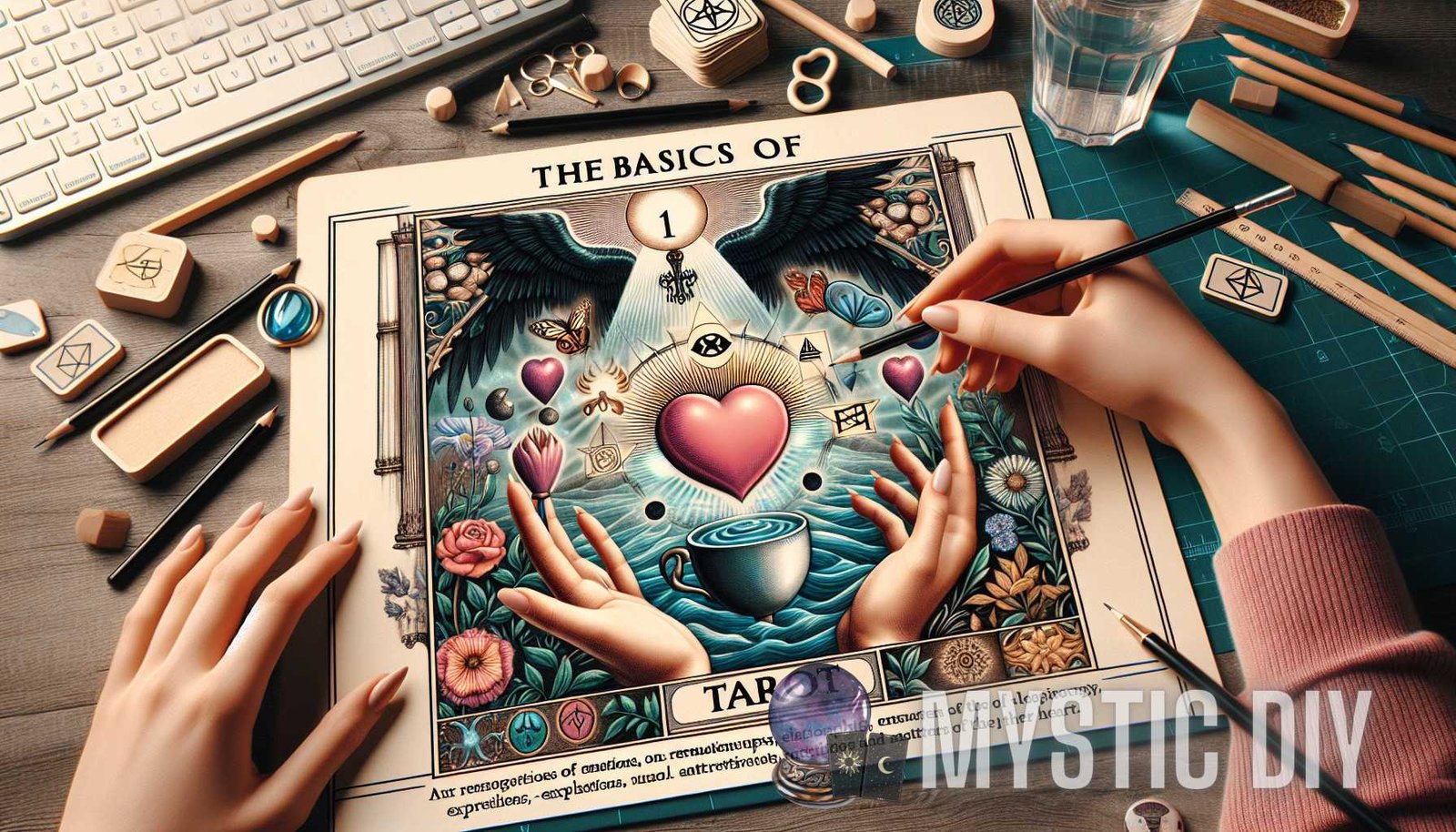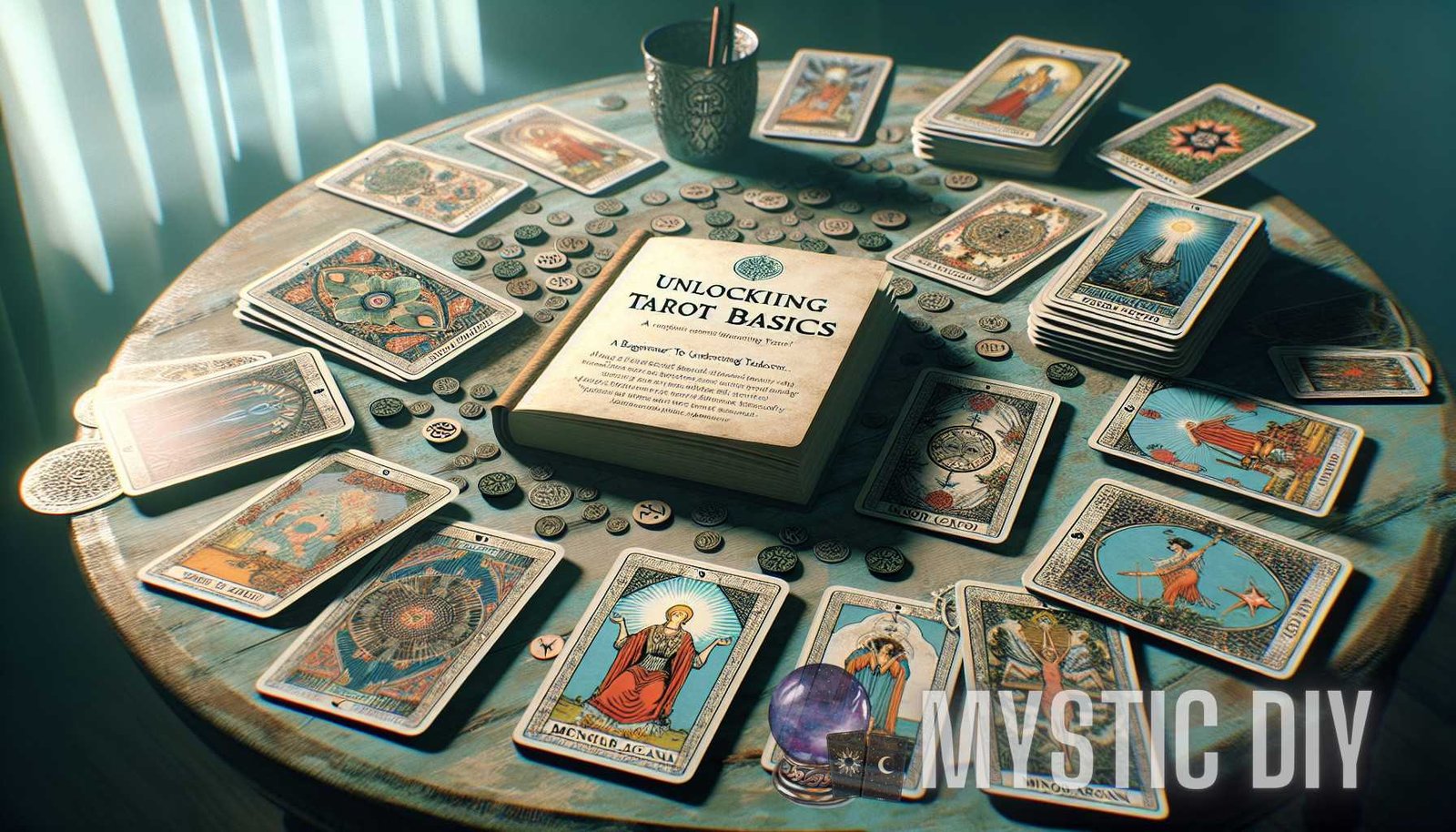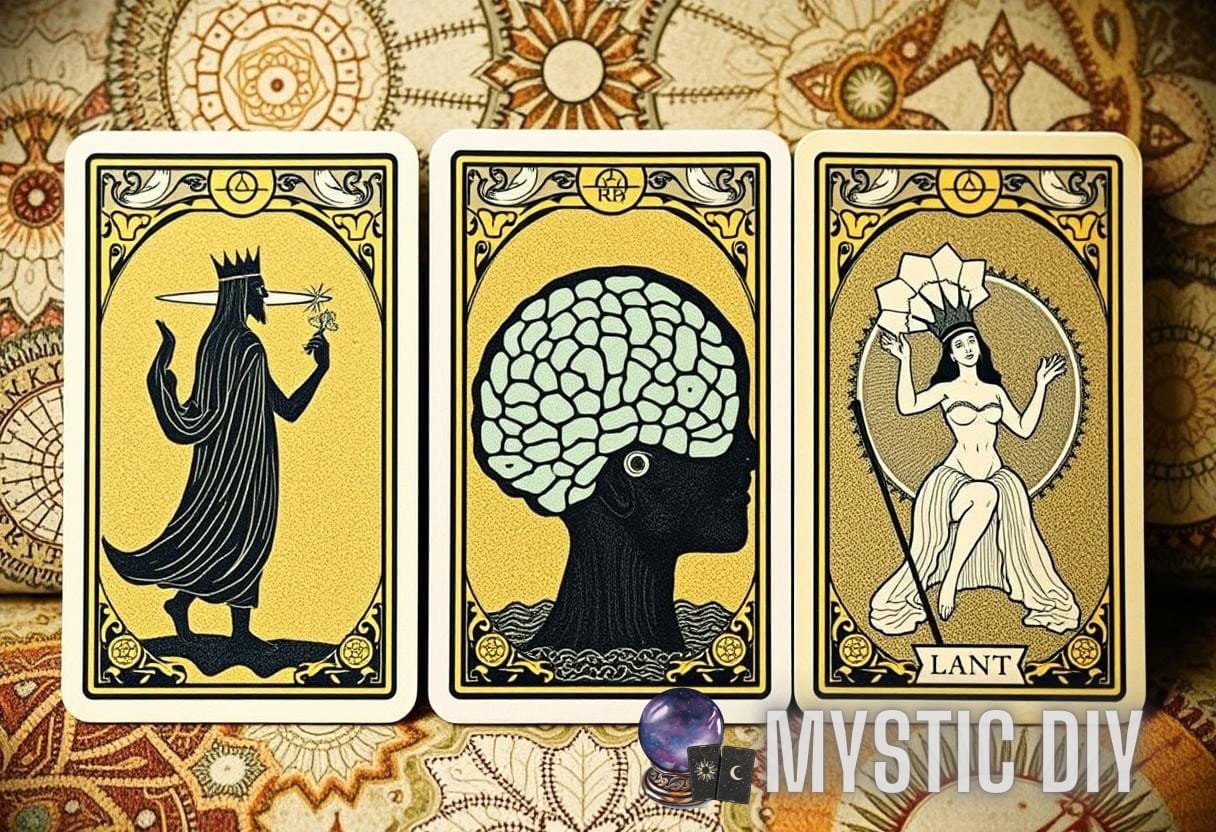Introduction
Have you ever been intrigued by the mystical world of tarot cards? Do you want to learn more about the meaning behind the cards and how to interpret them? Look no further, as this guide will take you through the basics of tarot, focusing on the Major and Minor Arcana, the two main components of a tarot deck. Whether you are a complete beginner or have some experience with tarot, this guide will provide you with a solid foundation to explore the fascinating world of divination and self-discovery.
What is Tarot?
Tarot is a deck of 78 cards that has been used for divination and self-reflection for centuries. The origins of tarot are somewhat mysterious, with different theories suggesting that it may have originated in ancient Egypt, China, or India. Despite its murky origins, tarot has become a popular tool for seeking guidance and insight into various aspects of life.
The tarot deck consists of two main parts: the Major Arcana and the Minor Arcana. The Major Arcana consists of 22 cards, each representing a different archetype or symbol. These cards are often considered the heart and soul of the tarot deck, providing deep insights and spiritual guidance. The Minor Arcana, on the other hand, consists of 56 cards divided into four suits: Cups, Pentacles, Swords, and Wands. These cards represent more practical matters and everyday situations.
The Major Arcana: A Journey of Self-Discovery
The Major Arcana cards are often seen as the ‘big picture’ cards of the tarot deck. They depict important life events, universal themes, and significant archetypal energies. Each card in the Major Arcana tells a unique story, and when read together, they form a narrative that mirrors the journey of life and self-discovery.
Here is a brief overview of the 22 cards in the Major Arcana and their key meanings:
- The Fool: Represents new beginnings, innocence, and taking risks.
- The Magician: Symbolizes manifestation, power, and skill.
- The High Priestess: Represents intuition, mystery, and hidden knowledge.
- The Empress: Symbolizes abundance, nurturing, and creativity.
- The Emperor: Represents authority, structure, and discipline.
- The Hierophant: Symbolizes tradition, spirituality, and belief systems.
- The Lovers: Represents partnerships, choices, and love.
- The Chariot: Symbolizes determination, willpower, and overcoming obstacles.
- Strength: Represents courage, inner strength, and self-control.
- The Hermit: Symbolizes solitude, introspection, and spiritual guidance.
- Wheel of Fortune: Represents change, destiny, and cycles of life.
- Justice: Symbolizes fairness, balance, and making ethical choices.
- The Hanged Man: Represents surrender, letting go, and gaining new perspectives.
- Death: Symbolizes transformation, endings, and new beginnings.
- Temperance: Represents balance, harmony, and moderation.
- The Devil: Symbolizes addictions, materialism, and negative patterns.
- The Tower: Represents sudden changes, upheaval, and revelations.
- The Star: Symbolizes hope, inspiration, and spiritual guidance.
- The Moon: Represents intuition, subconscious, and hidden emotions.
- The Sun: Symbolizes joy, vitality, and success.
- Judgement: Represents self-reflection, forgiveness, and awakening.
- The World: Symbolizes completion, fulfillment, and unity.
Each card in the Major Arcana carries a profound and complex set of meanings. When reading the cards, it is essential to consider the imagery, symbolism, and overall energy of each card, as well as its position within a spread. The interaction between the different cards in a reading can offer valuable insights and guidance.
If you want to dive deeper into the meanings and interpretations of the Major Arcana cards, there are numerous books, online resources, and experienced tarot readers who can guide you along your tarot journey. Exploring different interpretations and perspectives can help you develop your own personal relationship with the cards and discover what resonates with you.
Interesting Fact: The tarot deck has been used by many artists and writers as a source of inspiration. One well-known example is the surrealist artist Salvador Dalí, who created his own tarot deck in the 1970s.
The Minor Arcana: Everyday Matters and Practical Guidance
The Minor Arcana cards represent the more everyday aspects of life, providing practical guidance and insights into specific situations. They are divided into four suits, each corresponding to a different element: Cups (Water), Pentacles (Earth), Swords (Air), and Wands (Fire).
Each suit consists of 14 cards: Ace through 10, and the Court Cards (Page, Knight, Queen, and King). Just like the Major Arcana, each card in the Minor Arcana has its own meaning and interpretation.
Here is a breakdown of the four suits in the Minor Arcana and their general themes:

Cups
The Cups suit is associated with emotions, relationships, and matters of the heart. It reflects our feelings, intuition, and the connections we have with others.
Key themes in the Cups suit include:
- Love and relationships
- Emotional well-being
- Intuition and psychic abilities
- Creativity and artistic expression
Pentacles
The Pentacles suit is associated with material possessions, wealth, and practical matters. It reflects our physical well-being, finances, and the resources we have at our disposal.
Key themes in the Pentacles suit include:
- Financial stability
- Career and work
- Health and well-being
- Material abundance
Swords
The Swords suit is associated with intellect, communication, and decision-making. It reflects our thoughts, beliefs, and the power of our words.
Key themes in the Swords suit include:
- Intellectual pursuits
- Communication and conflict
- Mental clarity
- Decision-making and problem-solving
Wands
The Wands suit is associated with action, passion, and creativity. It reflects our ambitions, desires, and the energy we put into our projects and endeavors.
Key themes in the Wands suit include:
- Personal growth and development
- Career and entrepreneurship
- Passion and inspiration
- Manifestation and taking action

When reading the Minor Arcana cards, consider both the individual card meanings and the overall theme of the suit. The interaction between the suits in a spread can provide valuable insights into different aspects of your life and help you navigate everyday challenges and opportunities.
Getting Started with Tarot: Tips for Beginners
Now that you have a basic understanding of the Major and Minor Arcana, here are some tips to help you get started with tarot:
1. Choose the Right Tarot Deck
There are countless tarot decks available, each with its own unique style and energy. To get started, choose a deck that resonates with you visually and intuitively. Look through different decks and see which one speaks to you the most. Some popular decks for beginners include the Rider-Waite-Smith deck, the Thoth deck, and the Wild Unknown deck.
2. Learn the Card Meanings
Start by learning the basic meanings of each card in the Major and Minor Arcana. You can use books, online resources, or tarot apps to familiarize yourself with the symbolism and interpretations. As you gain more experience, you can develop your own personal connection with the cards and interpret them intuitively.
3. Practice Regularly
Like any skill, tarot requires practice. Set aside time each day or week to practice drawing daily cards or doing simple spreads. Regular practice will help you develop your intuition and become more familiar with the cards.
4. Keep a Tarot Journal
Keeping a tarot journal is a great way to track your progress and deepen your understanding of the cards. Write down your interpretations, record any insights or intuitive hits you receive during readings, and reflect on your experiences with the cards.
5. Join a Tarot Community
Joining a tarot community can provide support, guidance, and the opportunity to learn from experienced readers. You can join online forums, social media groups, or local tarot meetups to connect with fellow tarot enthusiasts and share your experiences.
Conclusion
Tarot is a powerful tool for self-discovery, guidance, and spiritual growth. By understanding the Major and Minor Arcana, you can unlock the depths of the tarot deck and embark on a journey of exploration and insight. Remember, tarot is a personal experience, and as you delve into the cards, trust your intuition and embrace your unique connection with the tarot symbols and archetypes.
Now that you have a strong foundation in tarot basics, grab a deck, shuffle the cards, and let the wisdom of the tarot guide you on your path to self-discovery!


